
Format: Paperback
Pages: 48
ISBN: 9782815102957
Pub Date: 31 May 2016
Description:
In 1066, William, Duke of Normandy, raised an army to invade England and to seize the throne. Maixent, a young boy from a poor family, became the unexpected companion of a nobleman named Tancrède de Hautmesnil on his way to join the Norman chief on the coast. From there, on the 28th of September and taking advantage of favourable winds, the fleet set off to launch the assault on England.
Aboard the many ships, men feared the capricious seas, but, as soon as dawn broke, the enemy coast was already in sight. They would soon be in Hastings for the decisive battle.

Format: Paperback
Pages: 200
ISBN: 9789088903670
Pub Date: 30 Apr 2016
Illustrations: 6 full colour
Description:
Mary Magdalene and the Virgin Mary continue to intrigue and fascinate us to this day. Their appearances in the Bible are brief, piquing our curiosity and compelling speculation about the unknown years of their lives. This volume contains modern translations of plays performed during the late Middle Ages in England about the lives of the Virgin Mary and Mary Magdalene.
These plays provide a link between canonical Scripture, apocryphal and gnostic materials from the first centuries of Christianity that survived secreted or in oral tradition, legendary materials that developed over the ensuing centuries, and contemporary medieval religious belief and practices. Materials from the N-Town Mary and other plays contain episodes about the childhood of the Virgin, her betrothal and marriage to Joseph, and her time after the death of Christ. The Digby Mary Magdalene begins with an account of the death of Mary Magdalene’s father, her subsequent fall into promiscuity, her redemption, her journey to convert Marseille and thus christianize France, her later years as a hermit and her death. These plays illustrate one way in which Biblical materials were available to lay people before the printing of the Bible. Reading these plays of the Virgin Mary and Mary Magdalene from the late Middle Ages increases our understanding of the history of the Marian and Magdalene traditions practiced in earlier centuries, as well as our understanding of what these women have come to represent today, shedding light on how their images have shaped the roles for women in the Church.
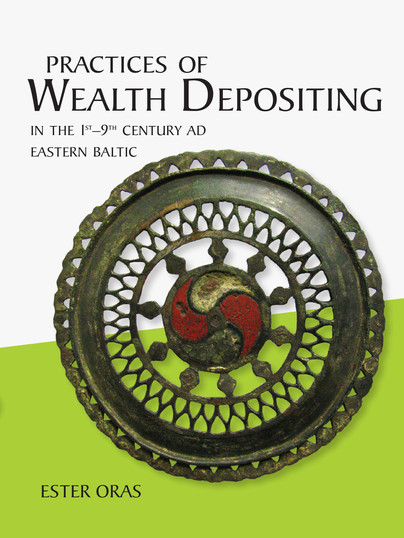
Format: Paperback
Pages: 350
ISBN: 9789088903076
Pub Date: 31 Jan 2016
Description:
This PhD thesis discusses the practices of wealth depositing in the 1st–9th century AD eastern Baltic (Estonia, Latvia, Lithuania). Wealth deposits are one or more valued object/s that is/are hidden deliberately as an intended separate deposition in a selected place in a specific, distinguishable manner. Wealth depositing is regarded as an important cultural practice which relates to and derives from various past social phenomena and changes respectively in spatial and temporal terms.
It is emphasised that wealth deposits should be analysed as a cohesive corpus of material, regardless of specific artefact types, functional groups, production material, environment of concealment, and most importantly without any predetermined interpretation categorisations.The dissertation presents different patterned practices of concealing valuables in the 1st–9th century AD eastern Baltic through a detailed contextual analysis of their main material characteristics: artefacts, their assemblages and appearance, environment of concealment, chronology and location in the cultural landscape. The study demonstrates how depositional practices change in time and space, and analyses relations between specific depositional practices and developments on a wider social scale. A comparative analysis of wealth deposits and important social changes in contemporary society based on overall archaeological material is presented. The key regional and cross-regional practices of wealth depositing in the 1st–9th century AD eastern Baltic are identified. Additionally, further comparisons are drawn between depositional practices in the eastern Baltic and other parts of the Baltic Sea region, especially Scandinavia.This thesis contributes to the discussions of concepts of value and depositional practices in a long-term and cross-regional perspective. A further aim is to look beyond the problematic ‘why?’-questions posed in the studies of wealth deposits, and move instead to more comprehensible questions of ‘how?’: how do depositional practices change in time and space, and how are these processes related to developments in a broader social context?The book contains a catalogue of all the 1st-9th century AD Eastern Baltic deposits analysed in the dissertation with descriptions of objects, environments of concealment, find circumstances, illustrations/photos and further references.
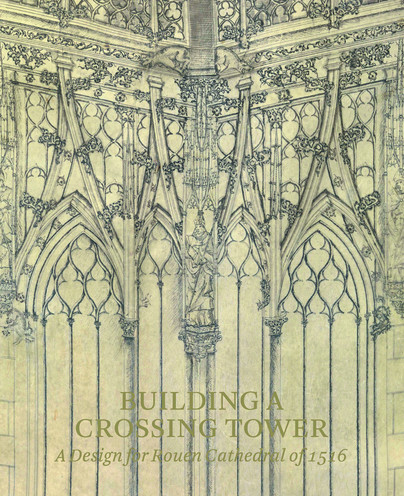
Format: Paperback
Pages: 136
ISBN: 9781907372933
Pub Date: 22 Jan 2016
Imprint: Sam Fogg
Illustrations: 70 colour illus.
Description:
Prompted by the recent discovery of an impressive three-metre tall late Gothic drawing of a soaring tower and spire, this book offers a rare insight into the processes of designing and building a major gothic project. The drawing’s place and date of creation are unknown, and it corresponds to no surviving Gothic tower. Equally mysterious is the three-quarter, top-down perspective from which the tower is represented, without parallel in any other medieval drawings.
Who drew this? When? And what did he hope to convey with his choice of a top-down representation of the tower? Building a Crossing Tower explores these questions, and uncovers the dramatic circumstances in which this drawing was created. The first part of the book links the drawing to an early 16th-century building project in the city of Rouen in Normandy, France. Rouen was then a thriving port, one of the most populous cities in France, and a vibrant construction site, where dazzling, flamboyant creations were erected side by side with Renaissance buildings. At the centre of this intense building activity was Roulland le Roux, the city’s leading master mason, most likely the author of the newly discovered drawing. Given the scarcity of French gothic drawing, the discovery of this impressive piece and its attribution to a known artist are significant events in themselves. Moreover, in this exceptional case it is also possible to recreate the social context of the drawing’s production, explored in the second part of the book. Previously unpublished minutes of the cathedral chapter reveal that the drawing was realised following the dramatic fire which destroyed the cathedral’s crossing tower in 1514. The fire sparked fierce disputes among the cathedral’s canons, who divided into two factions: one hoping to see the crossing tower reconstructed in stone, the other lobbying for a safer and cheaper wooden spire. The differences between the two parties and the changing fortunes of artists employed in the reconstruction project are documented in gripping detail in the chapter’s minutes, which reveal how the new drawing was commissioned and realised. But the minutes also reveal that this drawing ultimately failed to convince the chapter to support and authorise the project, despite its impressive size, perspective and skilful representation of virtuoso carving. The flamboyant gothic tower never was erected, and the worksite came to a standstill until 1542, when a Renaissance tower was eventually built by Robert Becquet. This drawing then represents a failed design proposal. Yet, for this very reason, it offers a unique insight into the politics of building a great late gothic project, shedding light on an ever-changing landscape of contrasts and collaborations. If drawings are often interpreted as a direct window into a master’s mind, graced by the touch of his hand, this drawing is unexpectedly revealed as a mirror of the social life of a key late Gothic building site.
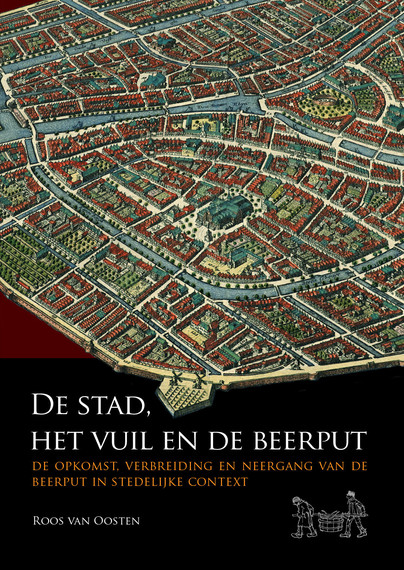
Format: Paperback
Pages: 344
ISBN: 9789088903144
Pub Date: 31 Dec 2015
Description:
There has been a lot of new data discovered on Medieval Dutch cities in recent decades. This has provided new insights on the develeopment, topography, material culture and the functioning of cities. This study combines and synthesizes data from several Dutch Medieval cities.
The focus of this data is an analysis of data retrieved from cesspools. Cesspools have reveiled a wealth of information in the form of artefacts which can shed light in daily life in the Medieval city. Cities included in this analysis are Alkmaar, Haarlem, Leiden, Amersfoort, Dordrecht, Deventer and ‘s-Hertogenbosch.
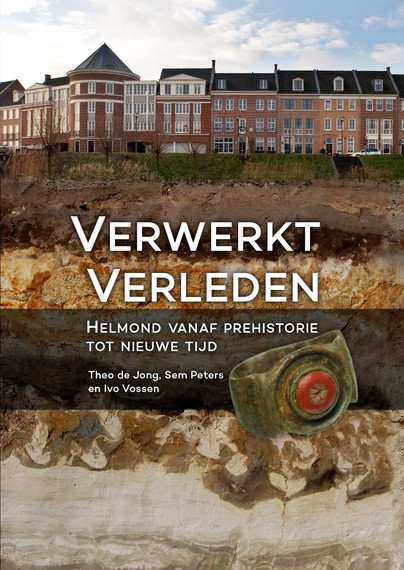
Format: Hardback
Pages: 320
ISBN: 9789088903298
Pub Date: 31 Dec 2015
Description:
This book, aimed at a general audience, presents the results of all archeological research performed in the Dutch city of Helmond during several decades. Starting in the early prehistory the authors present the earliest evidence of people living in the current region of Helmond, the rise of the city up until recent times.

Format: Paperback
Pages: 208
ISBN: 9781785700545
Pub Date: 30 Nov 2015
Description:
In the mid-fourteenth century the Black Death ravaged Europe, leading to dramatic population drop and social upheavals. Recurring plague outbreaks together with social factors pushed Europe into a deep crisis that lasted for more than a century. The plague and the crisis, and in particular their short-term and long-term consequences for society, have been the matter of continuous debate.
Most of the research so far has been based on the study of written sources, and the dominating perspective has been the one of economic history. A different approach is presented here by using evidence and techniques from archaeology and the natural sciences. Special focus is on environmental and social changes in the wake of the Black Death. Pollen and tree-ring data are used to gain new insights into farm abandonment and agricultural change, and to point to the important environmental and ecological consequences of the crisis. The archaeological record shows that the crisis was not only characterised by abandonment and decline, but also how families and households survived by swiftly developing new strategies during these uncertain times. Finally, stature and isotope studies are applied to human skeletons from medieval churchyards to reveal changes in health and living conditions during the crisis. The conclusions are put in wider perspective that highlights the close relationship between society and the environment and the historical importance of past epidemics.

Format: Paperback
Pages: 298
ISBN: 9781907372919
Pub Date: 30 Nov 2015
Imprint: Sam Fogg
Series: Late Medieval Panel Paintings
Illustrations: 400 colour illustrations
Description:
This beautiful and extensively illustrated catalogue presents in-depth case studies of twenty-four rare and remarkable Late Medieval panel paintings, many from the German-speaking regions of Europe, but also from Spain, France and the Southern Netherlands. These works – often fragments of larger altarpieces designed for liturgical performance and communal or private devotion – can be monumental and dramatic or small and intimate, but all on close examination prove to be rich in meaning – even in cases where the painters remain anonymous, and the precise contexts of their creation have become obscured or fragmented. The collected essays will encompass a broad spectrum of artistic styles, techniques, and interests, including in some instances the works’ original frames, and the attendant meanings they give to the imagery housed within.
The group will also be augmented by a rare and important small-scale tapestry altarpiece with close links to panel painting. The inclusion of such a piece, one of the many newly resurfaced works to be included in the catalogue, will offer an innovative approach to the scholarship of Medieval paintings, and enrich our understanding of the cross-pollination of ideas between mediums and the role played by painters in tapestry production at the turn of the sixteenth century.The book, a follow-up to Susie Nash’s important 2011 catalogue, considers the physical history, original form, condition and technique of the assembled works, using wood analysis and dendrochronology, paint samples, infra-red, x-rays and macro photography to document the materials and methods involved in their making and the alterations and transformations they have undergone with time. This new information is combined with close readings of their imagery and its presentation to explore issues of meaning, creative process, patronal intervention and artistic intention, leading in many cases to new reconstructions, attributions, dates and iconographic readings.The text is extensively illustrated with a series of images of all of the works, along with technical photographs and comparative material.

Format: Paperback
Pages: 290
ISBN: 9789088903397
Pub Date: 25 Sep 2015
Description:
The popular romances of medieval England are fantasy stories of love at first sight; brave knights seeking adventure; evil stewards; passionate, lusty women; hand-to-hand combat; angry dragons; and miracles. They are not only fun but indicate a great deal about the ideals and values of the society they were written in. Yet the genre of Middle English romance has only recently begun to attain critical respectability, dismissed as "vayn carpynge" in its own age and generally treated by twentieth-century critics as a junk-food form of medieval literature.
Chaucer's Tale of Sir Thopas has been assumed to be a satire of the romances' clichéd formulas and unskilled authors. But the romances evidently enjoyed popularity among all English classes, and the genre itself continued to flourish and evolve down to present-day novels and movies. Whatever Chaucer and his contemporaries thought of romances, they would have needed some personal familiarity with the stories and texts for comic tales such as Sir Thopas to be understood. A century ago, Beowulf faced the same problem that the Middle English romances still face: no modern translations were published because few had heard of the poem- because there were no modern translations published. Where the romances have been printed, they have normally been reproduced as critical editions in their original language, or translated into heavily abridged children's versions, but few have been published as scholarly close line translations with notes. This book is an attempt to remedy this by making some of these romances available to the student or lay reader who lacks specialized knowledge of Middle English, with the hope that a clearer understanding of the poems will encourage not only enjoyment but also further study.

Format: Paperback
Pages: 150
ISBN: 9780993033902
Pub Date: 31 Jul 2015
Imprint: Guy Points
Illustrations: 25 Black & White Illustrations 148 Colour Photographs
Description:
The aim of this book is to provide an informed introduction to the subjects so that the reader will be able to confidently recognise Anglo-Saxon church architectural features and Anglo-Saxon and Anglo-Scandinavian stone sculpture. The contents, including illustrations and photographs, all meticulously checked on site, are drawn from the author’s extensive research and travels over many years. Especially useful is the gazetteer section offering a selection of 127 sites providing excellent examples of the features described.
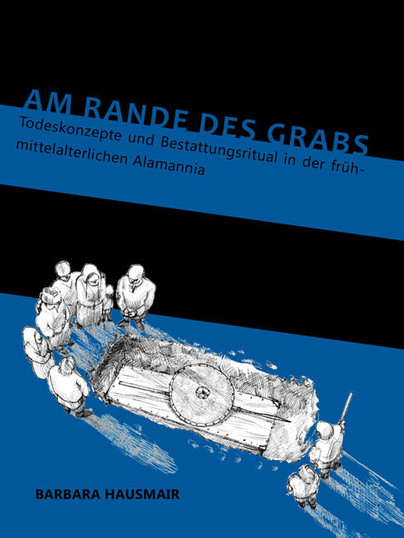
Format: Paperback
Pages: 250
ISBN: 9789088902956
Pub Date: 07 May 2015
Description:
The original circumstances in which archaeological remains came into being are crucial for the interpretation of the material record. Burials are first and foremost a result of a very traumatic event in a society – the death of one of its members. It is due to this context that burials represent a primary source for understanding past societies’ attitudes towards death.
Barbara Hausmair traces death concepts and their influence on mortuary rituals in early medieval communities in what is today known as southwest Germany. Using the cemeteries of Bad Mingolsheim, Horb-Altheim and Weingarten as case studies, the author compares archaeological patterns based on grave goods and grave arrangements with anthropological data on age, sex, pathologies, trauma and migration patterns of the deceased. By connecting the observed patterns with social theories on human death behaviour, Hausmair dissects the complex network of the burial communities’ social structures, death concepts and the newly constructed identities of the dead in the afterlife. Her thanatological approach provides original insights into the relationships between burial practices and ideas about death in Merovingian-period Alamannia by sensibly combining theoretical considerations with a thorough analysis of archaeological material. TEXT IN GERMAN.

Format: Hardback
Pages: 184
ISBN: 9781782978244
Pub Date: 01 May 2015
Illustrations: b/w and colour illus.
Description:
The Southampton brokage books are the best source for English inland trade before modern times . Internal trade always matched overseas trade. Between 1430 and 1540 the brokage series records all departures through Southampton’s Bargate, the owner, carter, commodity, quantity, destination and date, and many deliveries too.
Twelve such years make up the database that illuminates Southampton’s trade with its extensive region at the time when the city was at its most important as the principal point of access to England for the exotic spices and dyestuffs imported by the Genoese. If Southampton’s international traffic was particularly important, the town’s commerce was representative also of the commonplace trade that occurred throughout England. Seventeen papers investigate Southampton’s interaction with Salisbury, London, Winchester, and many other places, long-term trends and short-term fluctuations. The rise and decline of the Italian trade, the dominance of Salisbury and emergence of Jack of Newbury, the recycling of wealth and metals from the dissolved monasteries all feature here. Underpinning the book are 32 computer-generated maps and numerous tables, charts, and graphs, with guidance provided as to how best to exploit and extend this remarkable resource.An accompanying web-mounted database (http://www.overlandtrade.org) enables the changing commerce to be mapped and visualised through maps and trade to be tracked week by week and over a century. Together the book and database provide a unique resource for Southampton, its trading partners, traders and carters, freight traffic and the genealogies of the middling sort.

Format: Hardback
ISBN: 9781782978282
Pub Date: 12 Mar 2015
Series: British Historic Towns Atlas
Description:
This atlas is the definitive account in maps and words of the historic royal towns of Windsor and Eton. There has never been an account of the history of Eton town, and although Windsor Castle has been much studied, the last historical account of the town of Windsor was published as long ago as 1858.The atlas contains high-quality and original maps of the two towns at key periods between the twelfth and nineteenth centuries.
At the heart of the atlas lies a detailed and minutely researched map showing all the major medieval and post-medieval features in the context of a large-scale map of the towns around 1870, using Ordnance Survey maps as a source. The substantial introduction to the history of these distinctive towns charts their development over eight centuries. The atlas is presented as a large-format, high-quality A3 folder, with maps and illustrations printed at A2, allowing clear detail to be seen.All the buildings, historic sites and streets named on the maps are comprehensively documented in a detailed gazetteer, covering the history of the sites and the many sources used in compiling the maps. The value of the atlas is enhanced by the inclusion of numerous colour illustrations, including early maps and views of the towns, many of them previously unknown.For the first time, new research by historians, archaeologists and cartographers has been brought together to compile this unique and original portfolio.
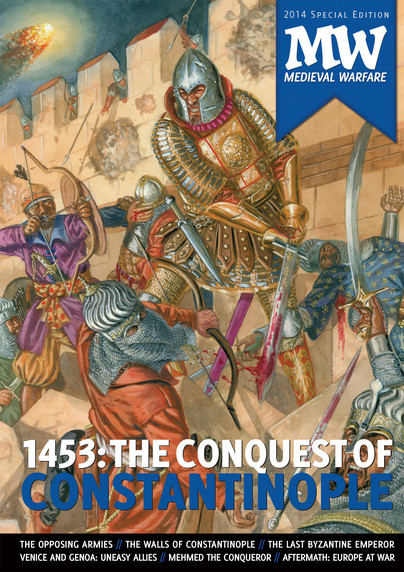
Format: Paperback
Pages: 80
ISBN: 9789490258108
Pub Date: 28 Feb 2015
Illustrations: 95
Description:
The 2014 Medieval Warfare Special issue is entirely dedicated - all 84 pages - to the Fall of Constantinople in 1453. It's like a normal issue, except it'll have more pages, more articles, more maps and more illustrations! Medieval Warfare Special 2014: 1453 - The Conquest of Constantinople with: - Eugenia Russel, Historical introduction – the destruction of the Oikoumeni - Kenneth Cline, Constantine XI – no room to maneuver - Murat Özveri, Mehmed ‘the Conqueror’ – A sultan of paradoxes - Nicola Bergamo, Venice, Genoa and Byzantium – difficult ‘trio' - Konstantin Nossov, The walls of Constantinople - Stephen Bennett & Nils Visser, The Conquest of Constantinople - Murray Dahm, Fallout – Contemporary reactions to the loss of Constantinople - Lukasz Rozycki, The fall of the Old World through the eyes of the “Polish janissary” - Raffaele D’Amato, The last defenders – the Roman army - Vassilis Pergalias, The final opponents – the Ottoman army - Ben Sheppard, Aftermath

Format: Paperback
Pages: 60
ISBN: 9781907372940
Pub Date: 04 Feb 2015
Illustrations: 40 colour illus.
Description:
Accompanying a focused display at The Courtauld Gallery that will bring together for the first time Pieter Bruegel the Elder’s only three known grisaille paintings – the Courtauld’s Christ and the Woman Taken in Adultery (which is barred from travel), The Death of the Virgin from Upton House in Warwickshire (National Trust) and Three Soldiers from the Frick Collection in New York – this book will examine the sources, function and reception of these three exquisite masterpieces. The panels will be complemented by prints and contemporary replicas, as well by other independent grisailles in order to shed light on the development of this genre in Northern Europe.Despite his status as the seminal Netherlandish painter of the 16th century, Pieter Bruegel the Elder (c.
1525–1569) remains an elusive artist: fewer than forty paintings are ascribed to him. Of these, a dozen are cabinet-sized. These small-scale works offer key insights as they often bear a personal significance for the artist and were sometimes given as gifts to friends and patrons. Presenting these works together for the first time is not only an extraordinary and unprecedented opportunity but it will be extremely revealing, considering their unusual nature in both Bruegel’s oeuvre and 16th-century art in general. Monochrome painting in shades of grey was a mainstay of Netherlandish art from the early 15th century, most often present on the wings of altarpieces and preparatory sketches for engravings. In contrast, Bruegel’s panels constitute one of the earliest and rare examples of independent cabinet pictures in grisaille, created for private contemplation and enjoyment. This seemingly austere type of painting has often been imbued with religious or political significance. On a purely artistic level, it enabled the painter to showcase his skill by limiting his palette. The publication, which includes a technical investigation of the three panels, will provide the opportunity to reassess the practical aspects of the grisaille technique and the many ways in which this effect was achieved. Indeed, Bruegel’s three monochromatic paintings display quite different techniques, raising the question of the painter’s intent. This is the latest in the series of books accompanying critically acclaimed Courtauld Gallery displays, following on from Collecting Gauguin (2013), Antiquity Unleashed (2013), Richard Serra (2013), A Dialogue with Nature (2014), Bruegel to Freud (2014) and Jonathan Richardson (2015).
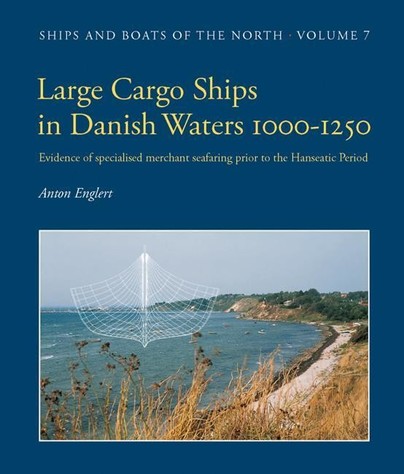
Format: Hardback
Pages: 378
ISBN: 9788785180537
Pub Date: 22 Jan 2015
Series: Ships & Boats of the North
Illustrations: 240 illustrations
Description:
“A wealthy man in Denmark, citizen of the town of Schleswig, built a large ship at great expense. And the king of the country decided to join company and take part in the profits. And after he had made good half of the costs, he owned a corresponding part of the ship …”The medieval Hanseatic merchants are famous for their maritime trade network, which extended across Northern Europe from the 13th century onward.
The rare quote above sheds light on a less known period, beginning in the late Viking Age, when large, elegant cargo ships were built and sailed across the sea by Scandinavian merchants.This volume presents the earliest archaeological evidence for specialised merchant seafaring in Danish waters. The cargo ship-finds of Eltang Vig, Lynæs, Karschau and Haderslev are explored in detail in order to illuminate the technology and style of a dynamic age of maritime enterprise and cultural transformation.

















